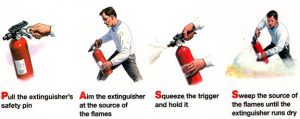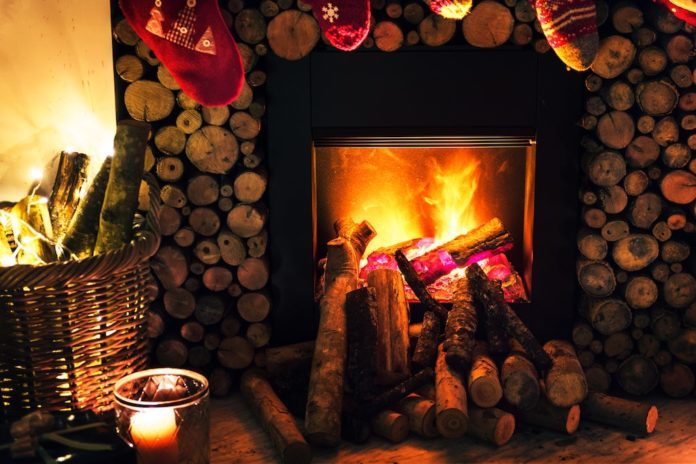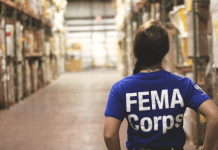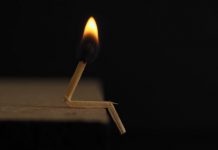Between 2011 and 2015; US fire departments responded to almost 360;000 house fires yearly. Those fires resulted in injuries; deaths; and damages. The National Fire Protection Association (NFPA) estimates deaths numbered around 2;500 and damages totaled nearly $7 billion.
Such statistics seem daunting. But don’t be afraid. You can achieve some peace of mind by planning to defend your home against fire; should it happen. It is what Preppers do. Your plan should be comprised of three elements: preparation and prevention; reaction during a fire; and response after a fire.
How to Prepare for and Prevent a House Fire
Preparation and prevention sounds like what it is. Use the following seven steps to secure your home and protect your family to minimize or thwart the threat of a fire:
Smoke crawl to avoid smoke inhalation.
- Create an emergency communications document. During a fire; everything turns chaotic; and you may lose track of family members. Ensure everyone knows whom to contact by creating a list of emergency response and family members’ numbers. Have a designated safety place (no; not a safe space) where everyone meets after they evacuate. It can be the mailbox; as long as it isn’t attached to the structure; or the end of the driveway; or anyplace close but away from the house.
- Inspect your home. Walk around your home and look for frayed wires and out-of-date sockets. Electrical fires aren’t as common as cooking fires; but they leave just as much devastation in their wake. Prevent their occurrence by replacing faulty wiring; purchasing surge protectors; and plugging appliances into a separate electrical outlets so you don’t overload a breaker.
- Invest in smoke alarms. When it comes to fire prevention; you should buy and install devices designed to aid your home safety endeavors. One of these is the smoke alarm; which the NFPA recommends installing in every bedroom; outside every sleeping area; and on every level of the home.
- Purchase other home safety devices. Besides smoke alarms; consider other home safety products; such as fire extinguishers and fire sprinkler systems. The latter requires the assistance of a professional technician; but it can save your home and people’s lives in the event of a fire.
- Perform routine maintenance. Home safety equipment only works when it’s well maintained; so create a checklist for smoke alarms and fire extinguishers. Smoke alarms should be tested every month; and their batteries changed every year. Fire extinguishers should also be examined every month to make sure they contain enough pressure to put out a fire.
- Teach your family the escape routes. The American Red Cross advises that you teach your family two ways of escape; along with a set meeting point outside the home. Once set; you should review the routes at least once a year.
- Review basic safety measures. In addition to developing escape routes; practice safety measures. These range from “stop; drop; and roll” to best practices for getting out of a burning building—for example; crawling along the floor when smoke fills the hallway and not touching a doorknob with a bare hand.
What to Do in the Event of a Fire
Using the seven steps outlined above prevents and prepares you for a house fire. But when one occurs; take immediate action with the seven steps shared below:

- Use a fire extinguisher. If the fire is small and you know how to use a fire extinguisher; put your skills to use. Extinguishing the fire reduces structural damages and the risk of injuries or death.
- Escape the home. If you don’t know how to use a fire extinguisher or have no way of getting to it; escape from your home immediately. You always have less time than you think to get out of a burning structure safely.
- Let other people know about the fire. You may have heard the smoke alarm go off; but other family members might not have. Because of that; yell “fire” as you leave the home so your loved ones know to take action.
- Protect your hands and lungs. If a closed door or its doorknob feels warm to the touch; leave it closed. And; if smoke fills the home; duck low and scramble your way to safety. If you become trapped in your home; go to a clear room and close the door behind you to reduce your risk of smoke inhalation.
- Stay out of the home. Once you escape your home; don’t reenter it. Going back inside only puts yourself and others in danger.
- Call for help. When you get outside your home; call 911. The fire department owns the necessary gear and training to enter your home and rescue people or pets that may be stuck inside.
- Know your backup plan. Smoke; fire; or debris can sometimes block your exit routes. When that occurs; stay in the room; close the door; and call 911. Then; open a window and signal for aid with a brightly colored cloth or flashlight.
How to Respond after a Fire
No one wants to experience a house fire; but knowing how to respond to one after the fact makes a difference. A well-thought-out response plan can alleviate some of the stress; worry; and fear. Employ the seven steps listed here to mend physically and emotionally from a fire:
- Seek medical attention. If anyone’s hurt; burned; or coughing; get medical aid to prevent infection or additional injury.
- Call friends and family. Always let your loved ones know you’re safe. It’ll not only alleviate their fears but also give them a chance to help you recover.
- Enter your home when it’s declared safe. You should return to your home only after the local fire authority signs off on it.
- Assess how people are doing. Everyone responds to trauma differently; so try to stay in tune to how people are feeling. If needed; seek the assistance of a licensed counselor to start healing from the emotional toll.
- Inspect your home. Once you can reenter your home; check it for structural damage. Also examine your telephone; electrical; plumbing; heating; and cooling systems. Go through household items; gather chemicals; medicines; and foods that were exposed to heat; smoke; or soot; and dispose of these items properly.
- Call your insurance agent. The insurance agent will walk through your home and inventory damaged items; so don’t throw away anything until they arrive. The agent may also want to see photos and receipts related to items lost in the fire.
- Clean your home. Some repairs and cleaning you can do yourself. However; wet drywall and insulation require professional assistance. To figure out whether you should DIY or call in the pros; use the American Red Cross’s guide for cleaning up after a fire.
The thought of a house fire is frightening; but you can take proactive steps to manage the fear. By following the tips outlined here; you’ll decrease your risk of a house fire as well as increase your chances of escaping and recovering from one.





















